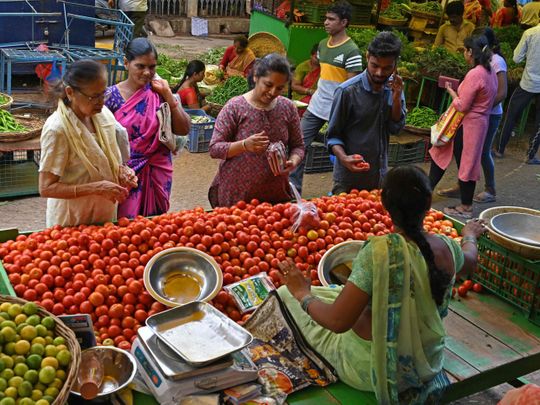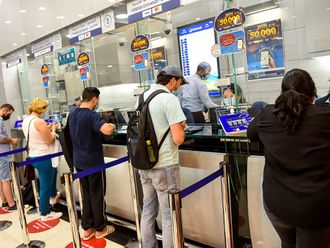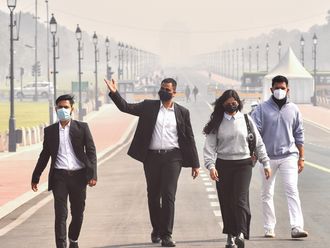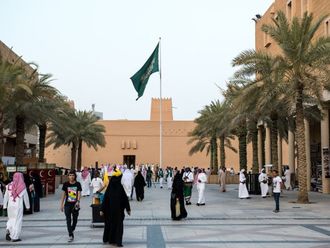
New Delhi: Indian tomato prices are soaring due to adverse weather, triggering a wave of social media memes comparing the cost of the essential ingredient with anything from petrol to political influence.
A delayed monsoon, heavy rains in some growing areas and hotter-than normal temperatures last month hit output of the crop, causing a fivefold increase in prices this year.
Tomatoes usually become expensive in the lean production months of June and July, but the impact this year has been exaggerated.
Tomatoes and onions are so emotive in the world’s most-populous nation that a surge in prices can trigger protests.
Indeed some ruling political parties in India lost elections because they couldn’t control the price of onions, which along with tomatoes are an essential element of mainstay dishes.
High food prices could also hobble the central bank’s efforts to drive economic growth and keep inflation under control.
A McDonald’s restaurant in New Delhi pasted a notice on its wall announcing the temporary unavailability of tomatoes. “Despite our best efforts, we are not able to get adequate quantities of tomatoes” that pass quality checks, the notice said. The company in India didn’t immediately respond to calls and an email seeking comment.
Social media is abuzz with tomato-related memes. One shows tomatoes racing ahead of petrol and diesel, while another says get a free iPhone with every kilogram of tomatoes.
The retail price of tomatoes in New Delhi on Thursday was 120 rupees ($1.45) a kg, compared with 22 rupees at the start of 2023, according to data compiled by the food ministry.
Price surge fuelling crime
By contrast, petrol was selling for around 96 rupees a litre in the capital.
The price surge is even fuelling crime. A farmer in the southern state of Karnataka reported the theft of 150,000 rupees of tomatoes, according to the Hindustan Times.
Tomato prices in Karnataka have crossed Rs 100 and they are even sold for Rs 150 per one kilogram.
The farmers are forced to sleep at their farms and take turns guarding the crop ready to be harvested, IANS reported.
The monsoon rains have made the situation worse for them. This scenario is commonly found in the south Karnataka districts of Kolar, Hassan where the crop is grown in large quantities.
The farmers explain that they are erecting tents at their farm land to monitor the movement of the people and vehicles.
Food inflation
They state that they need to be more vigilant in the wee hours. One box of tomatoes is fetching the price between Rs500 and Rs3,000.
Tomato prices typically rise during June-July and then again in October-November due to lower production seasons in major growing areas, said Rohit Kumar Singh, the top bureaucrat at the consumers affairs department of the food ministry. “We call it seasonality in commodity prices,” he said. “The prices will start declining when harvesting begins from August.”
Food inflation in India probably increased to 4 per cent year-on-year in June from 3.3 per cent in May,
Bloomberg Economist Abhishek Gupta said in a report. This estimate is based on sharp gains in prices of tomatoes, pulses and rice, according to available daily price data.
Tomato, onion and potato prices are major contributors to volatility in retail inflation in India, even if they make up a small portion of the index, according to a study by the Reserve Bank of India. Swings in prices of the vegetables may generally be high due to their perishability, vulnerability to weather-related disturbances, and less elasticity in demand, it said.
Southern and western states, which account for almost 60 per cent of the country’s total tomato production, send their surplus crop to other markets in India depending on the season.
As the federal government searches for a long-term solution, it’s seeking ideas from the public to develop cost-effective technologies and ensure tomatoes are available at affordable prices.











